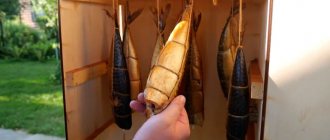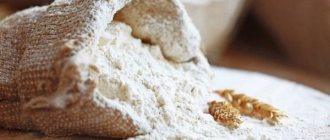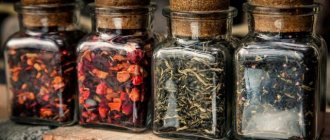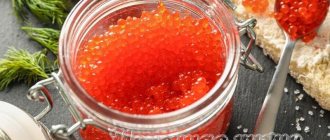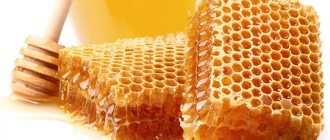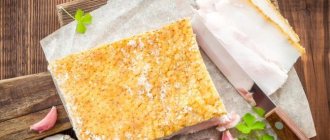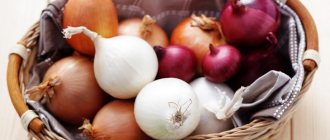Churchkhela - patented Georgian delicacy, which is always popular among tourists visiting the resorts of southern Russia or the Transcaucasian countries, it can also be purchased in private grocery stores with an ethnic bias.
Classic churchkhela, like all food products, has a limited shelf life. We’ll talk about the shelf life of churchkhela in the article.
Dear readers! Our articles talk about typical ways to resolve legal issues, but each case is unique.
If you want to find out how to solve your particular problem, please contact the online consultant form on the right or call the free consultation numbers:
—>
How to properly store chocolate at home? Find out about this from our article.
What does it depend on?
Churchkhela, made according to traditional recipes, is not a perishable food product.
The shelf life of churchkhela depends on the production technology: factory-made churchkhela, in the production of which preservatives and sugar were used, and it itself is vacuum-packed, can be stored for a very long time.
Classic churchkhela, made according to the traditions of Georgian cuisine, is stored for a shorter period, which depends on compliance with the manufacturing technology and conditions of transportation and storage.
Halva: what is the benefit, is there any harm?
The nutritional value of a product is related to its variety and compliance with storage rules. The most popular sweet in the world contains vitamins (B1, PP, F1 and D), a set of important minerals (potassium, zinc, phosphorus, copper, calcium) and vegetable proteins. Of the polyunsaturated fatty compounds, halva contains linoleic, linolenic and oleic acids, a certain percentage of amino acids and dietary fiber.
Useful qualities
Each type of dessert is useful in its own way; from the total number of useful properties, several main ones can be distinguished:
- high-quality fats (30%) act as an antioxidant - protect against high cholesterol;
- fatty acids are important in the fight against atherosclerosis, complete protein helps restore physical strength;
- dietary fiber activates the functioning of the intestines, and the pistachio variety of sweetness activates the functioning of the liver;
- the presence of a high proportion of tocopherol (vitamin E) protects the health of the woman’s reproductive system;
- the delicacy with peanuts is famous for its antitumor properties; the nut itself is important for improving memory and protecting the nervous system from stress;
- sesame-based halva is rich in vitamin A, which is necessary to strengthen the immune system and visual function;
- Sunflower and sesame desserts are important for the skeletal and muscular systems due to their high calcium and vitamin D content.
Harmful properties
In addition to the benefits, the abuse of a tasty product can be harmful - the health of tooth enamel will suffer. Halva is contraindicated for liver and gallbladder diseases, obesity, allergies to nuts or honey. Children under 6 years old are not given treats due to the threat of damaging the gastric mucosa, so that they do not choke on crumbs.
For adult gourmets, a safe portion is considered to be no more than 30 g of halva at a time, but not on an empty stomach. The harm of dessert increases due to the introduction of artificial additives and GMOs into its composition.
Therefore, when choosing halvicha packaging in the supermarket, pay attention to the label on additives, not forgetting the expiration date
Share Like Share Tweet Pin
- select undamaged fruits. Before cutting, you need to make sure that the vegetable is healthy, without signs of rot. If it is partially damaged, it will not be possible to save it. However, you can get out of the situation by making compote or juice from the surviving part.
- decide on the location and temperature. Darkness and coolness are the best companions for storing any vegetables.
- Capacity. For peeled fruits, use environmentally friendly and tightly closed packaging. Moreover, they are not too expensive.
The storage of churchkhela will last longer if it was produced in an industrial environment. At the same time, sugar and various additives (preservatives) were used for production to increase shelf life. If the product is also in a vacuum, long-term storage is guaranteed.
The classic sweet, which was made according to an old Georgian recipe at home, has a shorter shelf life. Everything here will depend on the manufacturing technology of the product, the conditions of its storage and transportation. Homemade churchkhela is made by hand according to a traditional recipe, usually in the autumn. No sugar or starch is added to it, much less chemical preservatives.
It should be remembered that various additives shorten the shelf life of the product. For example, a peeled walnut can maintain quality for only 1 month. This means that the finished product will not be able to remain fresh longer.
What is used to make it?
The components used in factory-made churchkhela are listed on the product packaging. Classic churchkhela is prepared by hand, usually in the fall , and then stored and consumed in the autumn-winter period.
When making real churchkhela, no sugar, starch or, especially, preservatives are added.
The constant components of real Georgian churchkhela are:
- nuts (walnuts, hazelnuts, almonds);
- flour (corn or wheat);
- fruit juice, usually grape; apricot, pomegranate, apple, etc. are also used.
The nuts are strung on a thin thread and then covered with a syrup made from boiled juice thickened by adding flour.
After this, the finished threads are hung to dry in the sun or indoors. The drying period is 1-2 weeks , after which churchkhela can be consumed or stored for long-term storage.
Modern options for preparing churchkhela
Today, the number of recipes for preparing churchkhela, or, as it is called in some countries, “chuchkhela,” has increased significantly. The following products are now often used as main and auxiliary ingredients:
- In addition to grape juice, apple, orange, plum, cherry, apricot and other drinks began to be actively used. Products acquire a special taste and properties if they are prepared with.
- The base can also be almost anything, the main thing is that the components can be strung on a thread. It could be peanuts,...
- Today, dried fruits, for example, dried berries, are increasingly being added to products. The syrup-drenched pieces are rolled in whole or crushed seeds.
Depending on the set of ingredients used, the properties of the product and its calorie content will change. This must be taken into account, especially if churchkhela is intended for children, the elderly or overweight people.
How to choose fresh?
It is best to purchase ready-made churchkhela, as they say, “from hand” - immediately after production , and then do the drying yourself. If this is not possible, then it is better to purchase churchkhela with a dried crust, but still soft inside.
When buying a treat, you can try carefully bending the thread. If it bends like rubber, then it will taste accordingly.
You should also refuse to buy a product whose surface is coated with sugar . With the classic recipe, this means that the conditions were not met when cooking the syrup from the juice with flour.
Cracks on the surface of the delicacy are a consequence of the fact that there is an excess of flour , which means the recipe was not followed during preparation.
The purchased churchkhela must be:
- moderately hard;
- no cracks on the surface;
- no signs of mold damage.
How long does ice cream last in the freezer? Read about it here.
Homemade churchkhela - 8 recipes
start your online diary » new diaries »
- 0
- 1
- 2
- 3
- 4
- 5
- 6
- 7
- 8
- 9
- A
- B
- C
- D
- E
- F
- G
- H
- I
- J
- K
- L
- M
- N
- O
- P
- Q
- R
- S
- T
- U
- V
- W
- X
- Y
- Z
- A
- B
- IN
- G
- D
- E
- Yo
- AND
- Z
- AND
- TO
- L
- M
- N
- ABOUT
- P
- R
- WITH
- T
- U
- F
- X
- C
- H
- Sh
- SCH
- E
- YU
- I
Question to the Priest.
Father, bless! Tell me, what can be done with the prosphora if it has become moldy or dried out? God bless you! Alexy
Alexy, if the prosphora has dried out, then it can be made soft again with water and eaten as it should be. If the prosphora has become moldy, then you will have to deal with it as is customary to deal with a shrine, which, by force of necessity, must be destroyed: burn it, or bury it in an untrodden place (i.e., one where people will not tread), or put it in running water, into the river (but under no circumstances into the sewer!). Hegumen Nikon (Golovko)
— — — — —
- Registrations247982
- Visitors10397
- Priests1178
- Total temples 19688
- Active temples12105
- Eggs
- Pasta
- Cereals
- Fish
- Meat
- Vegetables
- Seafood
- Mushrooms
- Something else
